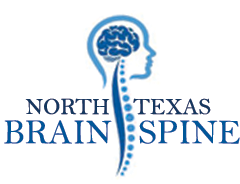Craniotomy would be needed by patients suffering from conditions within skull, like brain tumors.
Craniotomy for the Treatment of Brian Tumors
What are Tumors?
A tumor is an abnormal growth that occurs due to uncontrolled cell multiplication. In the skull, tumors can cause pressure on the brain because of the fixed size of the skull.
Tumors can be classified by their origin. Primary tumors are those located at the site where the tumor began to grow or where it originated. Metastatic, or secondary, tumors are those that have spread to other parts of body from the original tumor site.
Tumors are also classified based on their tendency to grow. Malignant, or cancerous, tumors tend to keep growing despite treatment and can become life threatening. Benign, or non-cancerous, tumors tend to grow more slowly and can be cured by treatment. However, benign tumors can still cause problems because of the pressure they cause on the surrounding brain tissue. In some cases, benign tumors can be life threatening.
Symptoms of Brain Tumors:
There are many different types of brain tumors and a patient's symptoms will depend on the specific type, size, and location of the tumor. However, common symptoms of brain tumors include:
- Headaches are one of the most common symptoms of brain tumors. Specifically, headaches upon waking, non-migraine headaches accompanied by vomiting, headaches accompanied by double vision, numbness, or weakness, and headaches accompanied by neck pain.
- Seizure
- Changes in personality or behavior, including odd mental or emotional events
- Changes in mental function, such as memory loss, confusion, speech difficulty, impaired concentration or reasoning
- Increase in sleeping time
- Gradual loss of movement or sensation in arms or legs, balance problems
- Difficulties with speech and comprehension
- Visual problems
To diagnose a tumor, your doctor will perform a neurological exam to assess the function of your eyes, ears, nose, muscles, sensations, balance, coordination, mental state and memory. To confirm the diagnosis, imaging studies such as magnetic resonance imaging, or MRI, and computed tomography, or CT, scans may be used. A biopsy may also be ordered to examine a sample of tissue from the tumor.
Treatment Options for Brain Tumors
If the tumor is static or growing slowly and does not cause pressure on the adjacent brain tissue, conservative therapy may be utilized. Patients are closely monitored on a regular basis with MRI scans, and if the tumor grows or the patient develops symptoms related to it, treatment is started.
If the tumor is growing fast, or is life threatening, definitive therapy may be utilized. This includes more aggressive treatment techniques such as surgery, radiation therapy, or chemotherapy. Biopsies and surgical treatment of brain tumors generally require a craniotomy.
What is a Craniotomy And Who Needs One?
A craniotomy is a surgical procedure that involves removal of a portion of the skull, or cranium, to access the brain. This surgery is performed by a neurosurgeon while the patient is under anesthesia. A craniotomy can be performed on any part of the skull depending on the location of the brain that needs to be accessed. The portion of the skull that is cut out is called a bone flap.
How is a Craniotomy for a Brain Tumor Performed?
The following outlines the steps involved in performing a craniotomy:
Before the Procedure
The patient lies on an operating table and is given general anesthesia. Their head is then placed in a device to keep their head in a fixed position during the procedure.
Initial Incision
Some hair may be shaved to clear the incision area. The surgeon makes an incision in the skin. Next, the skin and surrounding muscles are moved aside.
Exposing the Dura
The bone in the exposed part of the skull is cut and the bone flap is lifted. This exposes the covering, called the dura, that protects the brain tissues.
Locating the Tumor
The dura is cut and the tumor is located.
Removing the Tumor
The tumor is separated from the surrounding tissue and removed. If there are critical brain tissue or nerves near the tumor, monitoring techniques are used to make the surgery safer.
Ending the Procedure
The dura is closed and the bone flap is replaced. Finally, the skin is restored to its original position and sutured.
What Happens After the Craniotomy for a Brain Tumor is Performed?
After surgery, the patient is moved to an intensive care unit, or ICU, for close monitoring of their vital signs. They may stay on ventilation and breathing tube for some time. After the procedure, the patients may have a headache or feel nauseated. The patient will remain in the hospital for a few days and receive some short-term rehabilitation.




